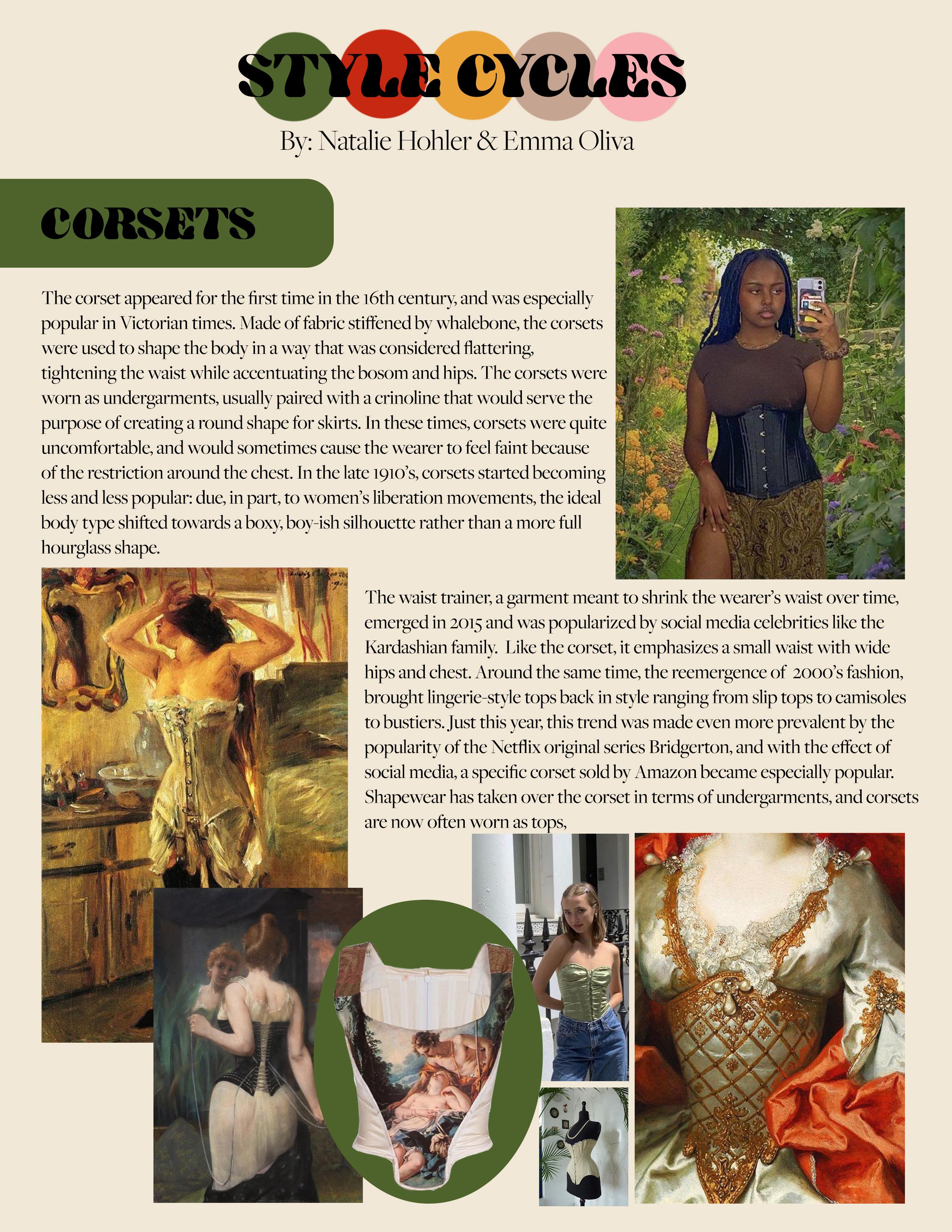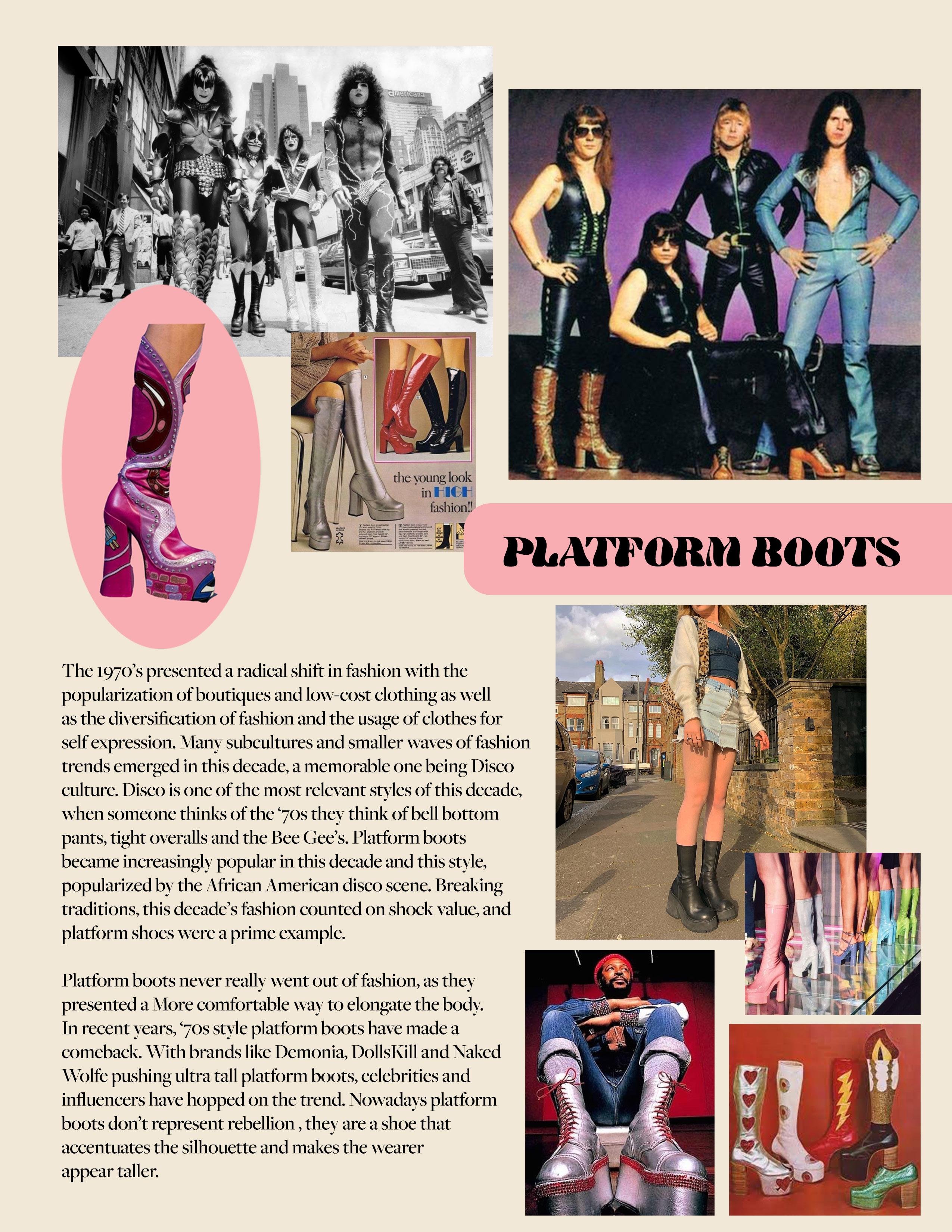

The FUTURE FAS
The FUTURE FAS
The FASHION GROUP eseNts
The FAS HION GROUP eseNts
The FUTURE FASHION The FUTURE FASHION
The FASHION ZINE The FASHION ZINE
The Future Fashion Group is a student-founded and student-run organization operating at New York University. We unite students across disciplines at the NYU schools to work together toward a common goal: to innovate the fashion industry.
The fashion industry has historically been exploitative of its workers, wasteful in its production, and harmful to the earth. The Future Fashion Group believes that we are everything the fashion industry so desperately needs.
Founded in 2018, FFG is an authority on campus in relation to the subjects of fashion and sustainable development. Our executive board organizes programming with leaders throughout the fashion industry to foster impactful education, meaningful conversation, and networking with individuals who are making a positive impact.
With the launch of our in-house digital magazine, the Future Fashion Zine, we offer a creative platform where students who are passionate about the art of fashion and the practice of sustainable living can create collaborative works in a variety of mediums and showcase their intellects and talents to the global NYU community, and to the world.
meet the staff









Graduation Year: 2022




Graduation Year: 2023
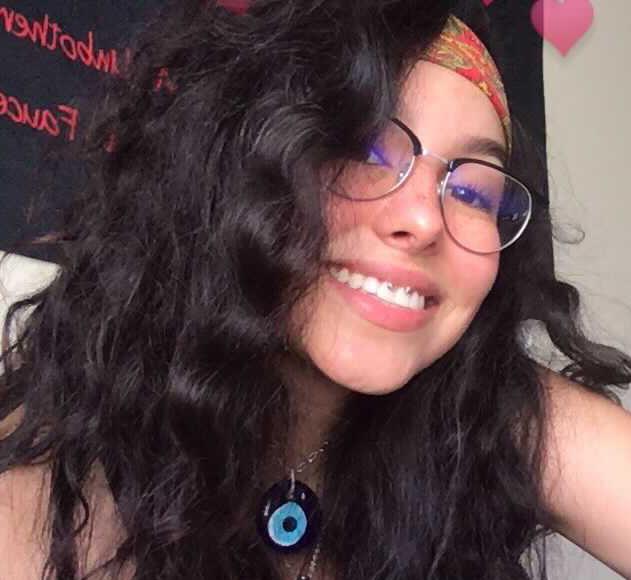
Graduation
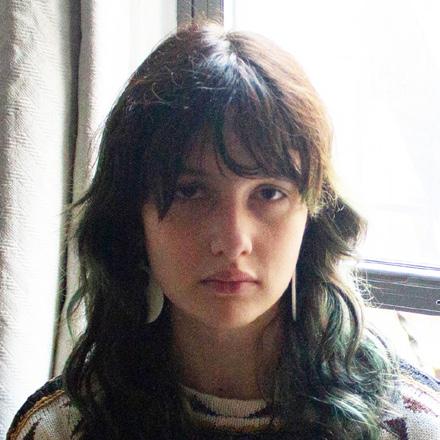 Genevieve Carlson Editor in Chief School: Liberal Studies and College of Arts and Sciences Graduation Year: 2021
Emma Oliva Writer School: Gallatin in Entertainment and Fashion Marketing Graduation Year: 2022
Natalie Hohler Editor
School: Gallatin in Entertainment and Fashion Marketing
Graduation Year: 2022
Nicoleta Krenteras Editor and Writer School: Courant and College of Arts and Sciences, studying Math and Environmental Studies Graduation Year: 2023
Mya Peterson Digital Designer and Writer School: College of Arts and Sciences, in Politics
Year: 2024
Anvi Agarwal Artist School: Stern School of Business, in Finance
Pamela Buscema Artist and Designer School: Tandon School of Engneering, in Integrated Digital Media
Jide Adeleke Editor and Designer School: Tandon School of Engineering, in Integrated Digital Media
Graduation Year: 2022
Caroline Souroujon Writer and Editor School: Stern Finance and Sustainable Business Graduation Year: 2023
Abby Fanucci Writer School: Steinhardt, in Media, Culture and Communications Graduation Year: 2023
Sharon Li Designer School: Steinhardt, in Media, Culture and Communications And Psychology Graduation Year: 2023
Jaden Galvan Writer and Designer School: Gallatin, in Fashion, Makereting, and Activisim Graduation Year: 2023
Khanh Quy Ho Designer School: Gallatin, in Marketing and Design Graduation Year: 2023
Gabrielle Kwon Designer School: Steinhardt, in Media, Culture, and Communications Graduation Year: 2024
Genevieve Carlson Editor in Chief School: Liberal Studies and College of Arts and Sciences Graduation Year: 2021
Emma Oliva Writer School: Gallatin in Entertainment and Fashion Marketing Graduation Year: 2022
Natalie Hohler Editor
School: Gallatin in Entertainment and Fashion Marketing
Graduation Year: 2022
Nicoleta Krenteras Editor and Writer School: Courant and College of Arts and Sciences, studying Math and Environmental Studies Graduation Year: 2023
Mya Peterson Digital Designer and Writer School: College of Arts and Sciences, in Politics
Year: 2024
Anvi Agarwal Artist School: Stern School of Business, in Finance
Pamela Buscema Artist and Designer School: Tandon School of Engneering, in Integrated Digital Media
Jide Adeleke Editor and Designer School: Tandon School of Engineering, in Integrated Digital Media
Graduation Year: 2022
Caroline Souroujon Writer and Editor School: Stern Finance and Sustainable Business Graduation Year: 2023
Abby Fanucci Writer School: Steinhardt, in Media, Culture and Communications Graduation Year: 2023
Sharon Li Designer School: Steinhardt, in Media, Culture and Communications And Psychology Graduation Year: 2023
Jaden Galvan Writer and Designer School: Gallatin, in Fashion, Makereting, and Activisim Graduation Year: 2023
Khanh Quy Ho Designer School: Gallatin, in Marketing and Design Graduation Year: 2023
Gabrielle Kwon Designer School: Steinhardt, in Media, Culture, and Communications Graduation Year: 2024
1. Letter from the editor: On Kyklos
Written by Genevieve Carlson, Theme2. Digitizing Fashion
Writtenby
Caroline Souroujon,by
Nicoleta Krenteras, DesignPhotography by
3. Sustainable or Sell-Out?
Writtenby
by
Olajide Adeleke Anvi Agarwal, Design by Olajide Adeleke Abby Fannucci and Emma Oliva, Design by Sharon Li4. Interview with Marius Jung of Adidas
Writtenby
Nicoleta Krenteras, Designby
Nicoleta Krenteras5. 3D Printing a Canvas Bag
By Jaden Galvan, Designby
Nicoleta Krenteras6. Editorial: Renaissance du Printemps
By Pamela Buscema8. Breaking the Cycle of Compulsive Consumption
Written by Emma Oliva, Design by Mya Peterson 9. Sustainability in Luxury Fashion
Written by Emma Oliva, Design by Mya Peterson 10. Interview with Carol Miltmore of Seek Collective
Writtenby
Nicoleta Krenteras, Designby
Nicoleta Krenteras11. Style Cycles: Historical Origins of Contemporary Trends
Written by Natalie Hohler and Emma Olivia, Designby
Gabrielle KwonK y k l o s K y k l o s K y k l o s
ky
On Kyklos
Ancient Greek: [kýklos], κύκλος “cycles”
Theme created by Nicoleta Krenteras
Earth is an infinite landscape of beings whose lives are sustained by cycles. Each night we sleep under the watch of a moon which waxes and wanes, pushing and pulling with it the tides of the oceans. We bear witness to the annual cycle of seasons, watching as decay creates the space that life needs to take shape, and as life offers up blooms which feed the mouth of death. Though our perspective may waver, the law of nature declares that the times of dormancy and destruction we live through are also signs that renewal is imminent.
For nearly a century, clothing brands and parent corporations have fabricated an industry by convincing us we must “keep up” with what is fashionable. By design, we have been conditioned to buy clothes according to a busy calendar of seasonal luxury collections and never ending deliveries of fresh inventory to retailers the world over. The mayhem of modern fashion is unceasing and the only reason by which it abides is profit maximization. It has resulted in irresponsible extraction of resources, maltreatment and death of textile workers, rising amounts of toxins polluting our beautiful planet, and increasingly innumerable tons of textile waste rotting in the earth. H&M and Burberry, just two examples, have been exposed for incinerating unsold clothing because they produced too much inventory. An estimated 10% of donated clothes see a second life; the rest are trashed outright or sold to developing countries, where mountains of free t-shirts and jeans undermine once-flourishing local textile economies. Such notions as dressing in new outfits every season and keeping up with trends have been employed to make overproduction and overconsumption seem natural, when it is anything but.
When Devin Gilmartin, Lily Cohen, Divya Moudgil and I founded the Future Fashion Group in 2018, we sought to educate the university community about the destructive nature of the conventional fashion industry and to create a space for NYU students to do the work that will transform it. Together we are changing how we and, by extension, how the world interacts with fashion– integrating a respect for the Earth and for each other, and incorporating the act of fashion as a love of beauty rather than a lust for what is new.
In the pages of this inaugural issue of the Future Fashion Zine, you will find voices that speak to where the fashion industry is in its evolution. Caroline Sourojon, Anvi Agarwal, and Olajide Adeleke explore the realm of digital fashion and it’s potential to disrupt the industry. Abby Fanucci and Emma Oliva expose greenwashing by brands like Reformation, and Nicoleta Krenteras interviews Marius Jung of Adidas and Carol Miltimore of Seek Collective. Abby Fanucci and Gabrielle Kwon report on the changing world of luxury fashion, and Emma Olivia discusses reforming wasteful shopping habits. Jaden Galvan illustrates the ingenuity of 3D printing by endeavoring to print a canvas bag, and Natalie Hohler and Emma Oliva explore the historical origins of contemporary fashion trends. Our editorial feature, Renaissance du Printemps, by Pamela Buscema draws inspiration from the growth and rejuvenation of springtime.
These members of the Future Fashion Group worked together in a variety of mediums and styles to create this first of many issues to come of the Future Fashion Zine to come.
Genevieve Carlson Editor-in-ChiefDigitizing Fashion
By: Caroline SouroujonPhotography: Anvi Agarwal
Digital innovation in the fashion industry is nothing new, from its use in 3D clothing design, to the rise of digital avatar influencers like Lil Miquela. With mounting pressures on the fashion industry to reduce its waste and emissions and move towards sustainability, digital technologies have become a tool for the industry to innovate. With the importance of retail dwindling, which was further exacerbated by the pandemic, these rising digital fashion trends are now at the forefront of the industry, giving them an unprecedented platform and reach. Since COVID-19, Gucci has experimented with AR to create digital sneakers on Snapchat, and fashion shows have gone virtual, with GCDS and Hanifa using digitally rendered clothing and avatars to lead their shows.
Most notably, the rise of digital fashion has created a new medium for design and expression. Digital fashion is when 3D clothing designs are rendered onto an image, to give the appearance that the clothing is real and is being worn. This innovation in fashion design has provided a new opportunity for brands and designers to showcase their work and create without the constraints of physicality, while consumers are now free to explore their style in a more sustainable way. There are many brands leading the digital clothing movement, from brands that create in-house designs Tribute or Carlings, and larger scale platforms that outsource by collaborating with traditional brands and digital artists, like Dress-X or The Fabricant. Digital clothing has been growing quickly since its inception,
and shows no signs of slowing down. In 2020 shoe brand Buffalo London launched an entirely digital shoe collection with The Fabricant, and RTFKT sold $3.1m worth of virtual NFT sneakers in 7 minutes.
When looking at a traditional item of clothing, the entire supply chain and production value is extremely resource intensive and environmentally taxing. And yet, most of these items will end up in landfills within a few wears. This inefficient linear system is environmentally taxing on our planet. With the rise of influencer culture, fast fashion and Instagram trends that come and go much quicker than ever before, the planet can’t keep up with this mass consumption. That’s where digital fashion comes in, it bridges the gap between the need for digital self-expression, while requiring significantly less environmental resources. According to Dress-X, digital clothing on average saves 3300 liters of water per item compared to traditional textiles. No longer do you have to buy a new item to keep up with an Instagram trend, just to post a picture in it and never wear it again, instead digital fashion promotes a sustainable form of style experimentation. Digital clothing is able to break this harmful cycle of buy-wear-dispose, as it can adapt to any age, gender or size, and makes it a piece you can actually wear forever.
With COVID-19, our digital image has become as important as ever, and digital fashion is the newest tool in crafting the way we want to be seen. It fills the void that COVID has left for
i g i t a l c l o t h i n g
pieces in these photos














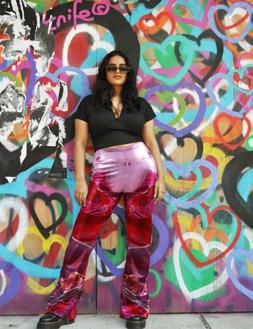
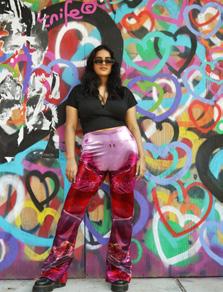

 dContactless
were purchased through DressX. Above: fluorescent pants by Nina Doll on Cathleen Deutsch.
dContactless
were purchased through DressX. Above: fluorescent pants by Nina Doll on Cathleen Deutsch.
travel and adventure, as a new form of escapism. These virtual pieces offer a completely new realm of creative freedom, that blur the lines between the digital and the real world. Designers are no longer bound by physical constraints, but they are now free to explore designs, textures and fabrics that could not be made in the real world. For us, this means an entirely new mode of self-expression and a new way to experiment with our style online. Digital fashion enables us to delve into a new realm of our digital personas, and to live out our wildest fashion fantasies, without the guilt of constant consumption or supporting fast fashion retailers.
For years, we have been willing to pay real money for “skins” for digital avatars in video games. Why not expand this into our actual digital persona? With the advent of NFTs and blockchain, it would even be possible to own a digital piece of clothing across various platforms, further blurring the line between reality and the digital world. As technology improves, it will be virtually impossible to discern between our real and digital expression (and clothing).
Our digital image is the extension of our real image, and is a curation of the way we want to be seen. Digital fashion is the mechanism that connects this need for self-expression online, and creates an opportunity to shift the fashion industry towards a more sustainable future.
 Worn above : latex orange blazer by Nina Doll.
Worn above : latex orange blazer by Nina Doll.
K y k l o s K y k l o s K y k l








Marius Jung: The Future of Adidas

Marius Jung and the Advanced Concepts Team at Adidas work on designs and concepts that won’t hit the market for years to come. From Germany to Brooklyn and from architecture to footwear, Jung has extensive experience and shares his wisdom on the future of performance athletic wear.

When did you first become interested in fashion?
I am from a small town in the middle of Germany. A farm community where a sense of fashion and design didn’t exist. Where I am from people approach life in a simple way. Hopefully nobody from back home reads this interview, but I have to share that perspective. I first became interested in fashion when I left my hometown and moved to Japan where I studied Product Design for a semester at Kyushu University in Fukuoka. During that time, I witnessed the attention to detail that most Japanese would use to pick their outfits - minimal and clean. It inspired me and definitely shaped my fashion sense and ultimately my wardrobe. After my time in Japan, I started my Internship with Adidas where I was presented fashion, trends and consumer needs on a different level. In Germany I was also working for an amazing sneaker store called Asphaltgold where I was able to get a solid foundational knowledge about streetwear and sneaker culture. I think these diverse experiences and opportunities really sparked my focus on the industry.
In three words or a sentence, how would you describe your style?
Minimal, essential, monochrome.
Where do your designs draw inspiration from? What do you do when you have no inspiration or creatively feel like you’ve hit a roadblock?
My designs are usually driven by functionality. I am always looking for the purest expression and communication of a product and its design. I am drawing inspiration from a lot of things, but especially the people around me. I am really grateful to be exposed to so many creative and talented people within Adidas and I really can’t remember a time where I have not been inspired by my colleagues. I jump a lot between different design disciplines and tools to generate different and unexpected outcomes. Taking a step away from my creative work and revisiting later, usually helps me shape my designs while navigating any roadblocks. Over the years I have learned to trust the process and be patient with my creativity and output. I have the best ideas in my early morning shower. I think these five to ten minutes are actually my most creative time in the day. During this time my brain wakes up and I am so relaxed that I naturally get into a highly-creative state. This may seem really strange, but I truly believe in my morning routine as a catalyst. Whenever I hit a creative block, I just need to jump into the shower to wash it off.

What does your design process look like and is it the same every time? Where does it start?
My design process depends on the requirements needed for the projected outcome. Over the past 10 years, I have built myself a toolbox with a lot of different tools and trained skills that I explore and combine to get the most impactful outcome. With every new task I generate a new approach and select the tools needed to keep the process interesting and fresh for myself. I am obsessed with storytelling – this is where a project starts for me. I like to build and refine the story first, before I put pen to paper on the actual design. When the projects are performance driven, they start with new insights, data or an innovative technology. My design process is also influenced by the team that I am working alongside. We are all highly-diverse creative characters with different approaches to design. And when we come together the process gets exciting and unpredicted. There are always many surprises when people push the boundaries of creativity and challenge the status quo. A big part of the process is driven by the team and the collective creative power within.
We will witness big shifts in the industry over the next several years utilizing the power of digital creation on a different level. Being part of a team that pushes this innovation to bring them to life really makes me proud. It gives us all a lot of confidence that we are working for a brighter future where we continue to put our planet first.
Is there anything exciting that you have in the works that customers can look forward to seeing soon?

There is a lot of great things coming that I am excited about. Unfortunately, I am not able to be more specific as I mainly work on concepts that are going to fuel our brand in the next two to five years. I work in the Advanced Concepts Team and our main focus is to improve the performance of an athlete through innovative design. I am sure that we will see our athletes become more explosive and powerful in their sports. I am excited to see athletes really push the limits of their own performance and sport in general. This will be something special to witness. If someone is inspired by our vision and picks up a new pair of running shoes to start a new journey to become a better version of themselves – then our team has done their job. We all are looking forward to seeing our customers and athletes adopt technologies to help redefine the future of sport. There are amazing things coming.





Of the pieces that you have designed, which is your favorite and why are you most proud of it? What did you learn through the process of moving from ideation to final product?
I am more proud of the process than the product itself. We often push innovation really hard and work with a lot of suppliers and manufacturers to make sure that our products are exceptional and on time. Working through a pandemic really challenged me and the team to innovate on our process. We have shifted completely and started to adopt and work in our own virtual reality. Now we see the impact of adopting new tools into our design approach on a daily basis. We really believe that this will be the future of product creation – it is so intuitive while being a far more sustainable process. In the future we hope to eliminate sample creation and make decisions during the process by simulating designs and their performance virtually.

“If someone is inspired by our vision and picks up a new pair of running shoes to start a new journey to become a better version of themselves – then our team has done their job. ”
3D Canvas Bag
By Jaden GalvanMy 3-week endeavor to explore renewable alternatives in fashion by designing and constructing a sustainable, 3D-printed bag, was, while at times tedious, a success. Made only of yarn and a recycled plastic canvas, the design can be remelted and reused to sustainably follow fad fashion trends and refresh your closet. This process, however, did not come without challenges. Working with the sensitive, 3D-printed frame that is prone to breakage often meant backtracking, restrategizing, or starting from scratch.

Overall, my experience was positive. I believe that the intersection between 3D printing and fashion provides a unique alternative to the industry’s current wasteful production models. Numerous designers, including Ganit Goldstien, Annie Foo, and Julia Korners already integrate this technique to create 3D printed shoes, fabric, and accessories. Keep reading for an inside look on my process!
Step1.Step 1. Step 1. St1.Step1 .
STEP1
Locate a design on Thingiverse. Thingiverse is an online platform where creators, artists, and designers upload their 3D print designs.

Step 2. Step 2. Step2 .Step
Alter the code. While the template found on Thingiverse was the springboard for my project, I made a few customizations to better tailor the code towards my design-- for example, I made the holes on the canvas smaller to accommodate my yarn size.
Step 3. Step3. Step 3. Step3 STEP3

.2petS.2petS petS .2 2petS
Prep the 3D printer. Before printing, I had to load the 3D printer with desired filament (plastic) and begin heating the bed.
4. Step 4. Step4. Step 4. Ste STEP4
Adjust and send to print. Next, it’s important to adjust the size and location of the print and send the code to the printer.

STEP 5
Altogether, the printing process took 7 hours! After hitting print, all there is left to do is wait.
6. Step 6. Step6. Step 6. Step STEP6 Repeat. Repeat step 4, four more times for each part of the canvas.
STEP7
Measurements & calculation.
Once the 4 plastic canvases were printed, I was ready to begin the stitching process! Begin by calculating the measurements of your bag.


8. Step 8. Step8. Step 8. Step8 STEP8 Stitch.
Trace design onto plastic canvas and begin stitching! Plastic canvas stitching is not like traditional stitching, I started each canvas at the second hole from the bottom and stitch up diagonally.

See Jaden Galvan’s fastcut process video here
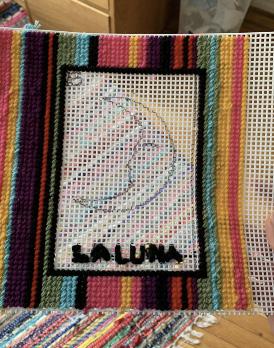







BreakingtheCycle ofCompulsiveConsumption TipsfromaSustainableFashionMajor
Writtenby EmmaOlivia Designby MyaPetersonFast fashion brands produce new products and styles weekly, counting on social media to roll out new trends and keep up the demand for their product A certain trend goes out of style, the consumer tosses the item and buys a new one, and the cycle continues
Three out of five fast fashion items end up in a landfill, and the average American throws out 81 pounds of clothing a year (Good On You) This creates an enormous waste of product, resources, and, of course, money As a certified shopping addict and a sustainable fashion major, I’ve learned how to talk myself out of splurging on clothes I won’t wear, and how to identify key purchases that are kinder to our planet and get the most out of my money Next time you are shopping, consider asking yourself these questions before clicking “add to cart ”
1. What exactly am I looking for?
It is really easy to get distracted and buy everything you see, but by focusing on a couple of items you ’ re more likely to make those purchases and walk out feeling accomplished! get those and walk out! I like to make Pinterest boards with outfits and styles I like, then narrow down a couple of staple clothing items Fewer classic, high- quality pieces are always better than more trendy styles that will fall apart in a year rather than quantity and styles that will only be trending for a couple of weeks and will fall apart after a year
While the clothes will be gone, the destructive effects of fast fashion will not: in just a year, the fashioon inndustry releases 1.2 billion tons of carbon dioxide.
2. Do I have any clothes that I can upcycle?
Before I go shopping, I look through my closet for items that I have not worn in a while and think about possible ways of upcycling them into something that I like more Besides sewing, you can use fabric glue, crop shirts, or add details with accessories like safety pins
3 How many times will I realistically wear this?
Let’s admit it, we all have clothes that have never seen the world outside of the closet To avoid this, I ask myself: “What are five outfits that I can wear with this item and clothing that I already have?”
4. Can I buy it secondhand?
Rather than sending another new item to landfill, shop second hand! My favorite online platforms are Depop, eBay, ThredUp, and Vinted Shopping second-hand put a halt to the fast fashion cycle
5. Where do I turn to for sustainable and ethical brands?
Clothing waste is not the only environmental consequence of fashion, the production of clothing relies on the burning of fossil fuels and introduces toxic fibers and materials into the natural world Many brands' supply chains are built around production centers where garment workers are exploited, working long hours in poor conditions earning unlivable wages
With all this in mind, turn to online research! The website Good On You rates clothing brands based on sustainability in regards to people pollution, and animals and offers sustainable alternatives to brands whose ratings come up short So before being persuaded by that Tik Tok influencer, check the brand’s rating If you see what goes into that designer dupe, you may reconsider steps 1-4
Here’s the hard truth: the fashion industry pushes a short trend cycle on consumers to increase their profits, and social and traditional media only helps them get away with it None of us really need the latest, super-trendy shirt or the pants you saw on Instagram to be stylish Getting dressed is more fun when your shopping habits are kind to yourself and the planet!



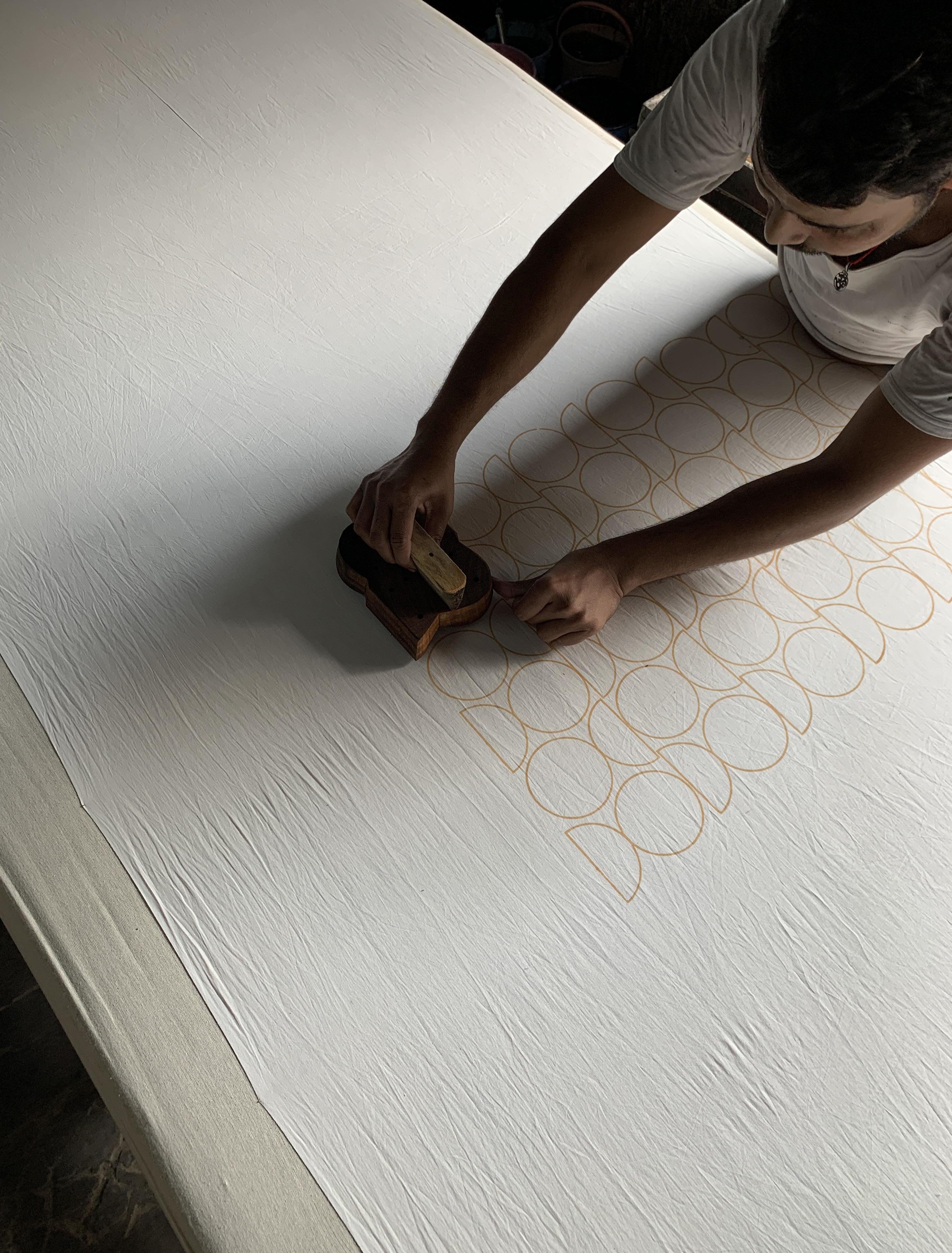
Carol Miltimore: The Art of Producing Textiles


This spring, the team at Future Fashion Magazine sat down with Carol Miltimore to gain insight on her experience as a designer and within the sustainable fashion industry. As a Parsons School of Design alumni, corporate fashion designer (Calvin Klein Jeans, Converse, and Armani Exchange), and now the owner of her own brand, Seek Collective, Miltimore has a plethora of knowledge and experience to share.
When did you first become interested in fashion?
Where did it all start?
I was one of those strange people who always knew what I wanted to do and it was fashion and the arts. I was really lucky that close family friends lived in NYC and had their own brand. It was the type of brand that doesn’t really exist anymore. They produced everything in New York with high-end materials for the upper east/west side crowd. They would send me boxes of leftover fabric and the fabric was gorgeous-- Italian fabrics and gorgeous silk jacquards-- and I would just play with the fabric and make things out of it.
As I got older, I started sketching fashion designs, and back when I was in highschool there was a tv channel dedicated just to showing the international fashion shows on repeat all day that I was really obsessed with it. In high school, it became very clear to me that clothing can be used to express yourself either to fit in or to show that you don’t fit in and I found that aspect of fashion fascinating. My background, more than that, was fine arts. My mom has always been in the arts and I was always painting which she encouraged. Then by the time I was deciding to go to college, I knew I really wanted to focus on a design arts school and I ended up going to Parsons, ultimately majoring in fashion design.
How would you describe your style?
It’s a weird mix between a preppy sophistication and an eccentric artist vibe.
Tell us a little about the materials you work with, what is your favorite material?
I knew if I was going to start a brand, I wanted to be able to speak to the supply chain. I didn’t want to hand things over to a factory and have them source everything. I wanted to be able to speak very honestly about who these people are that make the fabric, dye the fabric, or weave the fabric. It was a very deliberate practice I set up with Seek. It’s really hard to choose a favorite, I love them all for different reasons and I am so close to everyone I work with in India. I spent so much time there with everybody, they became a different family to me. When I think about each different fabric, between block printing and natural dye and handloom weaving, I just think of the people and I can’t choose a favorite. Block printing is this sort of ancient printing practice and when you watch people, the master printers do it, it’s so mesmerizing, the rhythm, the skill, and how much goes into it. From the carving to the printing—it is an art form unto itself.
“Clothing can be used to express yourself either to fit in or to show that you don’t fit in”
What differences did notice when switching from a career in corporate fashion to your own sustainable brand? What drove that switch?
When I was in Parsons, I did a year in Paris and that was when I really learned more about textiles. I was taking textile courses and visiting really historic weaving studios that do the weavings for Chanel. That got me much more involved in textiles, the history of textiles, and how that plays a role in fashion. When I finished school and started working, I kept taking textile classes on the side and I became really fascinated in the history of textiles and how tied it is to communities and society in a way that it tells such a story. I worked corporate for 10 years as a designer, so when I started Seek I was so tired of working corporate where they would say “let’s do this print and make it look like it was a block print”. I just thought, why don’t we just go in and start putting the block printers.
About Seek Collective:
Seek Collective, established in 2014, abandons the traditional, wasteful supply-chain model seen so often in fashion today to create colorful and beautifully patterned pieces that are truly reminiscent of how holistically delicate and deliberate the company is.

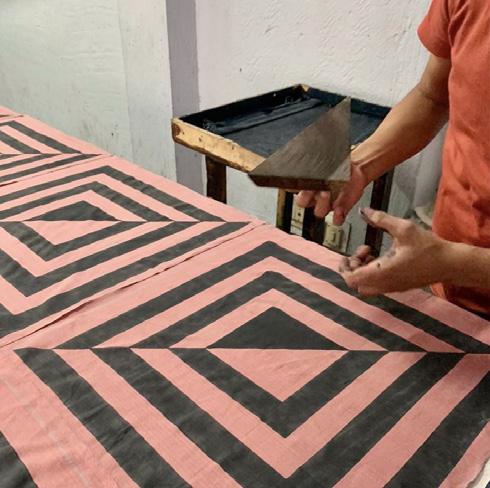

Where do you see room for improvement in the fashion industry? What is something either consumers or companies should be aware of?

I think the problem now is all the greenwashing that’s happening. How can consumers tell the difference between brands that are saying things just to say things and those who are actually doing what’s necessary to back it up? Consumers need to start educating themselves and discern between what’s real and what’s not.
I think so much about it in terms of the food industry. Organic produce became so popular, but it’s so much easier when you can see and grow it and avoid pesticides, it’s a much simpler system. Fashion is such a complex system between where you grow the cotton, pick the cotton, weave the cotton, dye the cotton, and stitch the cotton. There are just so many people in so many places and elements involved, it can get really overwhelming for people. I understand, as well, it’s not something that most people are educated on, or need to be necessarily. I do think it would be good for customers to start telling the difference and where something is stitched is not necessarily the same as being sustainable or ethical.
Where do you see yourself, as a designer, years from now?
I want to grow in a way that remains sustainable in every sense of the word, not even for me as a person running the business but even also for my partners. What keeps me going now is I know the impact the jobs have on everyone I work with and want to maintain that for all my partners.
Is there anything exciting that you have in the works that customers can look forward to seeing soon?
I would like to include other manufacturers at some point. I’m in the midst of talking to someone to do sweaters sourced in America with wool that comes from California. Diversifying is where I see some things coming into play in the future. For me it’s about finding the right partner, I’ve been wanting to add sweaters for a while but finding the right people that have the values that I have and are producing in a way that I find ethical, but also sustainable to the environment, is actually kind of hard.
